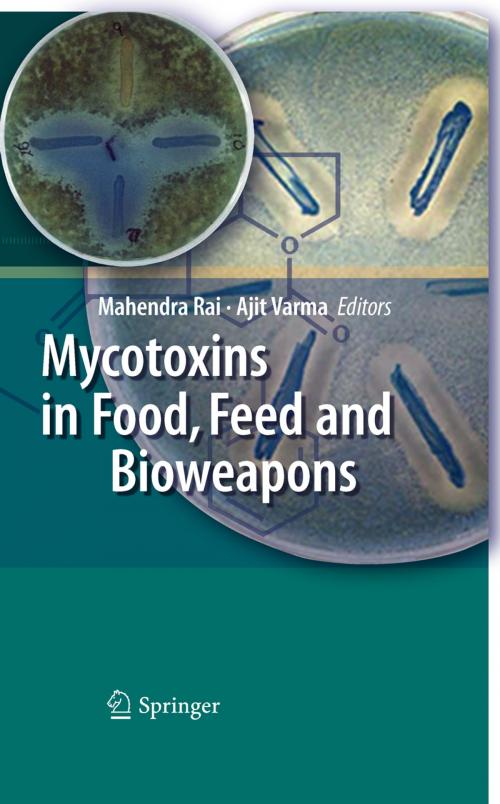Mycotoxins in Food, Feed and Bioweapons
Nonfiction, Science & Nature, Science, Biological Sciences, Biochemistry, Microbiology| Author: | ISBN: | 9783642007255 | |
| Publisher: | Springer Berlin Heidelberg | Publication: | October 26, 2009 |
| Imprint: | Springer | Language: | English |
| Author: | |
| ISBN: | 9783642007255 |
| Publisher: | Springer Berlin Heidelberg |
| Publication: | October 26, 2009 |
| Imprint: | Springer |
| Language: | English |
Mycotoxins are made by different biosynthetic pathways, and they have an extremely wide range of pharmacological effects. This book will update readers on several cutting-edge aspects of mycotoxin research, including topics such as: new analytical methods for detection; the adoption of an ancient Mexican process for detoxification of aflatoxins; mycotoxin management in Ireland, Lithuania and South America; mycotoxin reduction through plant breeding and integrated management practices; and natural aflatoxin inhibitors from medicinal plants. Further contributions examine ochratoxins, selected trichothecenes, zearalenone, and aflatoxin-like gene clusters, as well as sclerotial development in Aspergillus flavus and A. parasiticus. Of particular interest are the chapters on the potential use of mycotoxins as bioweapons. This book will stimulate new thinking on the need to develop therapeutic as well as preventative interventions to reduce the toxicological threat of mycotoxins.
Mycotoxins are made by different biosynthetic pathways, and they have an extremely wide range of pharmacological effects. This book will update readers on several cutting-edge aspects of mycotoxin research, including topics such as: new analytical methods for detection; the adoption of an ancient Mexican process for detoxification of aflatoxins; mycotoxin management in Ireland, Lithuania and South America; mycotoxin reduction through plant breeding and integrated management practices; and natural aflatoxin inhibitors from medicinal plants. Further contributions examine ochratoxins, selected trichothecenes, zearalenone, and aflatoxin-like gene clusters, as well as sclerotial development in Aspergillus flavus and A. parasiticus. Of particular interest are the chapters on the potential use of mycotoxins as bioweapons. This book will stimulate new thinking on the need to develop therapeutic as well as preventative interventions to reduce the toxicological threat of mycotoxins.















